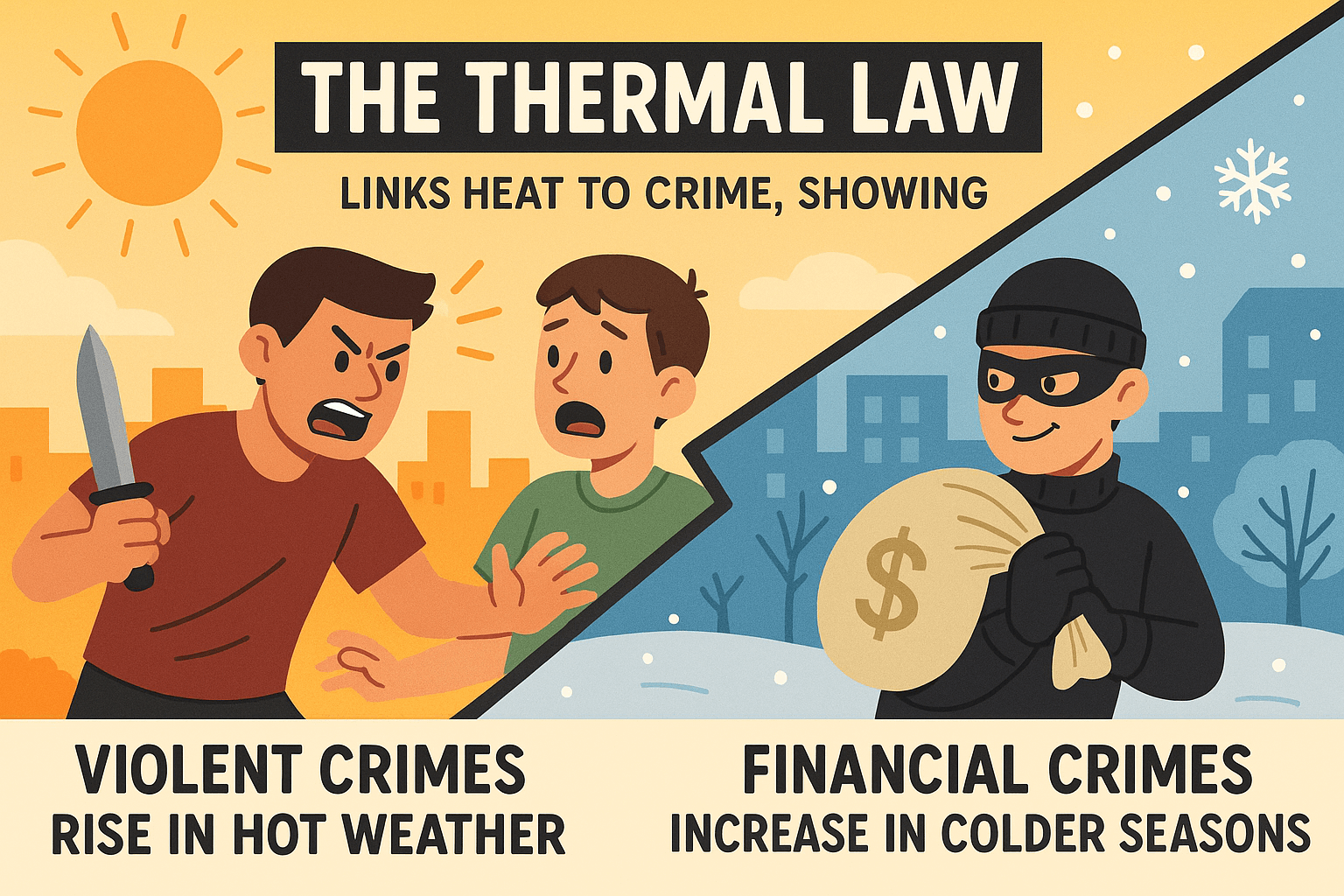The Thermal Law in Criminology: How Temperature Influences Crime Patterns
1. Introduction: Understanding The Thermal Law in Criminology The study of crime patterns and their causes has long intrigued sociologists, psychologists, and criminologists alike. One fascinating area of research that has gained significant attention is The Thermal Law—a concept that connects climatic temperature variations with fluctuations in criminal behavior. Simply put, The Thermal Law observes … Read more


